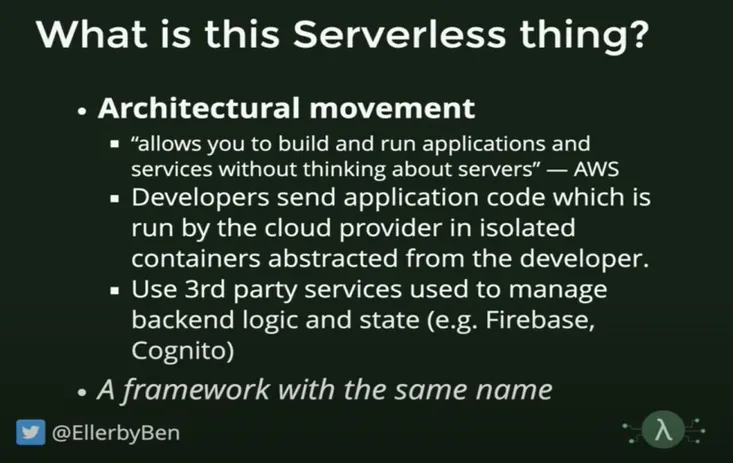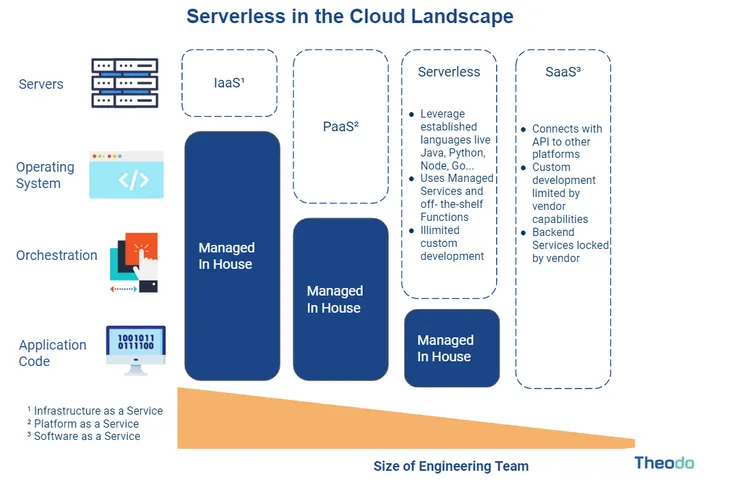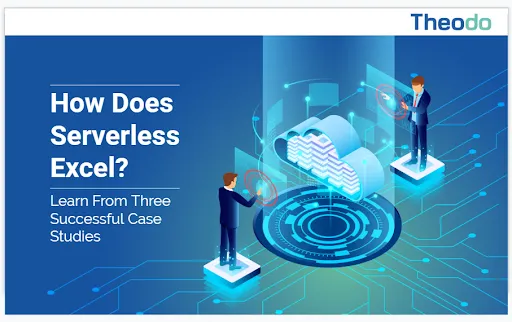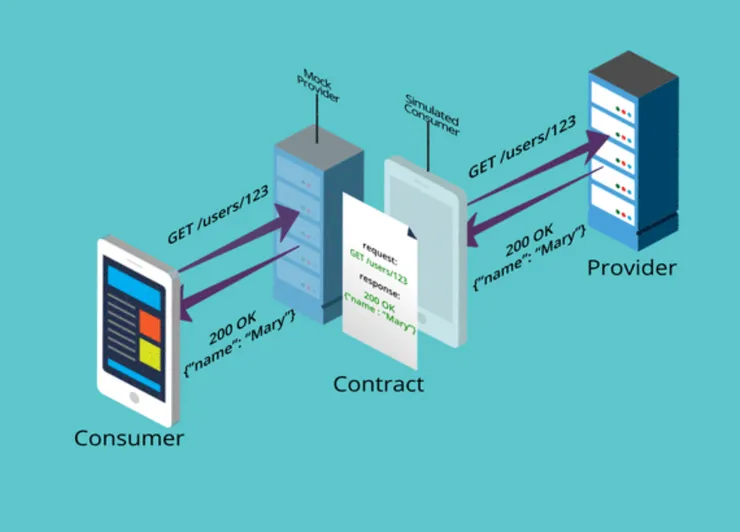Serverless Is More Than a Trend, Best Companies Adopt It
Alex de Boutray6 min read

A recent article by the WSJ highlighting the benefits of serverless for organizations points at a building awareness by thought leaders about the impact this new trend can have for companies. It resonates with our own experience, celebrating successful serverless implementations with our clients in the last couple of years.
Yet, when pitching prospects about the value they can unlock through this technology, we often find that serverless is not very well known among decision-makers.
If the value is clear, why is there a lack of awareness?
The Term Serverless is Confusing
Ben Ellerby defended the serverless concept in an article, noting that it “is not a good term, yet it is used to describe a powerful and often misunderstood concept.” So, here is his definition:

When we first introduce people to serverless, there is this aha! moment when they understand it doesn’t mean there are no servers — it’s just that they’re further outsourced to cloud providers.
This graphic positions serverless in the cloud landscape:

In a nutshell, using serverless gives you the ability to develop your own applications and microservices, to integrate off-the-shelf services like payment or user authentication, and to process events generated by these services or other SaaS. Meanwhile, the size of the engineering team decreases, as the full responsibility of managing the infrastructure is delegated to a cloud provider.
Serverless, Right for Large Companies as Well as Start-Ups
Gartner already mentioned serverless computing as one of the top 10 trends in 2019. Allied Market Research expects the global serverless architecture market to reach almost $22 billion in 2025, from $3 billion in 2017. Led by IT & Telecom, they expect the revenue to increase in all sectors, with the highest growth in the Media & Entertainment industry.
Large companies drove the market at its beginnings, with use cases such as real-time web applications and data processing; but SMEs will exhibit the highest growth rate between 2018 and 2025, according to the same study.
In his article Serverless is for Everyone, Sheen Brisals, Senior Engineering Manager at The LEGO Group, explains that “for a majority of start-ups, the tech stack is something they are born with”, therefore “change is easier when compared with a big enterprise”. But “starting small with serverless is perfectly applicable to a start-up as well as to a grown-up.”
As cloud providers invest in improving their solutions, more developers adopt serverless for developing microservices and functions, expanding the potential use cases.
Download the free presentation here
It’s Not Just About Saving Costs. Serverless Computing Solves Business Problems and Delivers Better Customer Experiences.
Reduced operational and development costs are the most important benefits sought by organizations going serverless, together with the automatic scaling of servers according to demand. On the product side, the increase in developer productivity and reduced engineering lead-time has a positive impact on the speed of delivery, thus on the time-to-market.
To overcome the challenges of dealing with legacy applications built during their 100+-year existence, companies like Liberty Mutual embraced serverless computing to solve real customers’ problems. Among the solutions that the IT team have built, Gillian Armstrong (Solutions Architect at Liberty Information Technologies) and Mark McCann (Architect) mention:
- A virtual agent for their call center to answer the most common questions.
- A virtual assistant to help the clients manage their policy documents.
According to Armstrong, with serverless:
The cost is so low, because it’s all managed services, and they’re able to bring it out, trial it with users for a little bit, make sure the whole system works, and then just scale seamlessly up.
At Theodo, we’re also obsessed with business outcomes, and we train our engineers to focus on delivering value for our clients’ end-users, in line with our Lean culture. When we start a new project, we recommend our clients use serverless components when we’re confident it will add a competitive edge to the solution.
Check in this video to see how our ground transportation client used serverless for managing omnichannel, real-time notifications to passengers:
Serverless Computing Is as Sophisticated as It Is Powerful: the Main Roadblock is Training
According to the O’Reilly Serverless Survey 2019, with a panel of 1500 respondents from a wide range of locations, companies, and industries, some of the biggest challenges are linked to the education and hiring of staff.

In the organizations that have not (yet) adopted serverless, “fear of the unknown” comes in second after security concerns.
Some components proposed by Cloud providers, like DynamoDB from AWS, have huge potential, but using them correctly is still a skill that requires mastery.
To tackle these concerns, Theodo developed EventBridge Storming workshops, adapted from the Event Storming workshop technique by Alberto Brandolini. During these sessions, we work with business stakeholders to define a common language around application fields (e.g. order, payment, and shipping) that we can use to communicate with the team. We then use this vocabulary to design an architecture based on events grouped by domain and well-defined system boundaries.
Cloud providers and the user community also recognize the challenges faced in upskilling teams to handle serverless. The good news is that they are doing an outstanding job at improving the tools, developing best practices around security concerns, and sharing knowledge on novel ways to solve issues. Theodo is proud to have contributed to multiple frameworks and libraries in the space, an achievement recognized with a partnership with AWS and the Serverless Framework.
Conclusion
Reductions in Total Cost of Ownership and Time-to-Market are two compelling reasons to consider serverless for IT leaders. Besides, the granular nature of FaaS and managed services allow companies of all sizes to progressively build new applications and replace pieces of legacy architecture without requiring an engineering big-bang.
Chances are that you’re already using serverless. If your technical stack includes a cloud provider such as AWS, Azure, or Google Cloud, your engineers have probably used their FaaS offerings for data processing or queue services for notifications. You’re not starting from scratch!
This means that serverless is one of the easiest technologies to adopt. Even if your main infrastructure is still bare metal, you can experiment and iterate with serverless on a limited scope quickly and seamlessly. It will give you a better idea of the benefits and challenges of serverless for your company, right now.
—
Need help? Contact me at alexdb@theodo.com
Cover photo by Danielle MacInnes on Unsplash

Alex de Boutray
VP of Engineering at Theodo US


